This is an authorized translation in English of a post in French by @terresco: Rencontres avec l'Afrique - En route vers le pays Dogon
As my primary language is not English, there are probably some mistakes in my translation.
Remember that the person who speaks here is NOT me, Vincent Celier (@vcelier), but @terresco, a French guy.
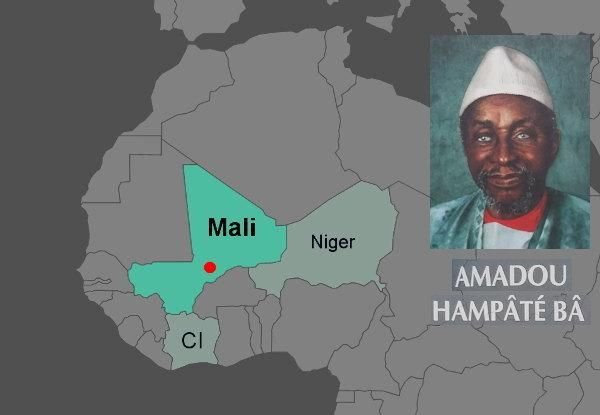
On vacation in Bandiagara, Dogon country, in December 1994, I was hosted by the school teacher. A perfect host who in addition to a fabulous welcome in his family made me discover his people and his region. An old gentleman, whom I had tea with every morning, introduced me to Dogon culture, his own. Beautiful and complex, complexified perhaps, but beautiful anyway.
The value of words
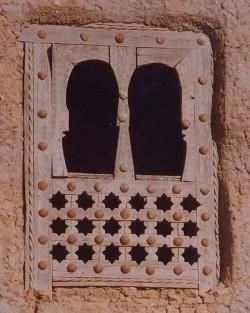
The Dogon have above all an animist culture, strongly including the cult of the ancestors. They believe in a unique God named Amma who created the earth and took it as his wife. They had twins who taught the language to the eight ancestors of a couple that Amma had made in the clay. A mixture of religion and mythology that simply explains the origin of the people. All, giving rise to many festivities, needless to say.
The Dogon seek harmony, this is found in everyday life. The greetings I mentioned in the previous article show the interest we have for the other. Other examples are interesting or surprising for us. The women congratulate the men, the men thank the women, the young people show their affection for the old people who highlight the acts and the contributions of the young people. The Dogon have a rather strange relationship with another ethnic group, the Bozos. They mock each other but need mutual assistance, a bit like the French and the Belgians.
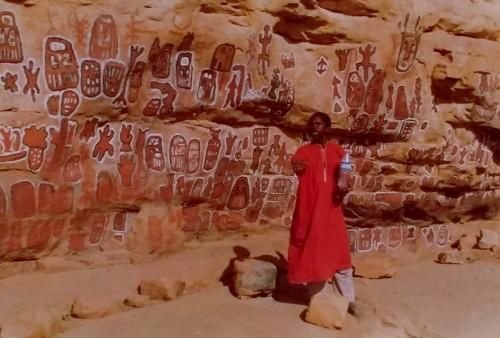
So were my breakfasts in Bandiagara, between mystic and reality, tradition and religion, mystery and practical sense. The hikes with Pierre, my attentive host, were no less interesting.
The cliff, a place of life and death
The Dogon live on the plateau and on the cliff itself. Isolated villages with steep access. This is where Pierre brought me, by small roads we reached beautiful villages of varying size but with similar architecture for the neophyte. We stopped in the house of friends or family, drank tea, sometimes ate a little. The houses are usually built around the courtyard, much like an Andalusian patio; the bedrooms, the kitchen and the granaries overlook the courtyard.
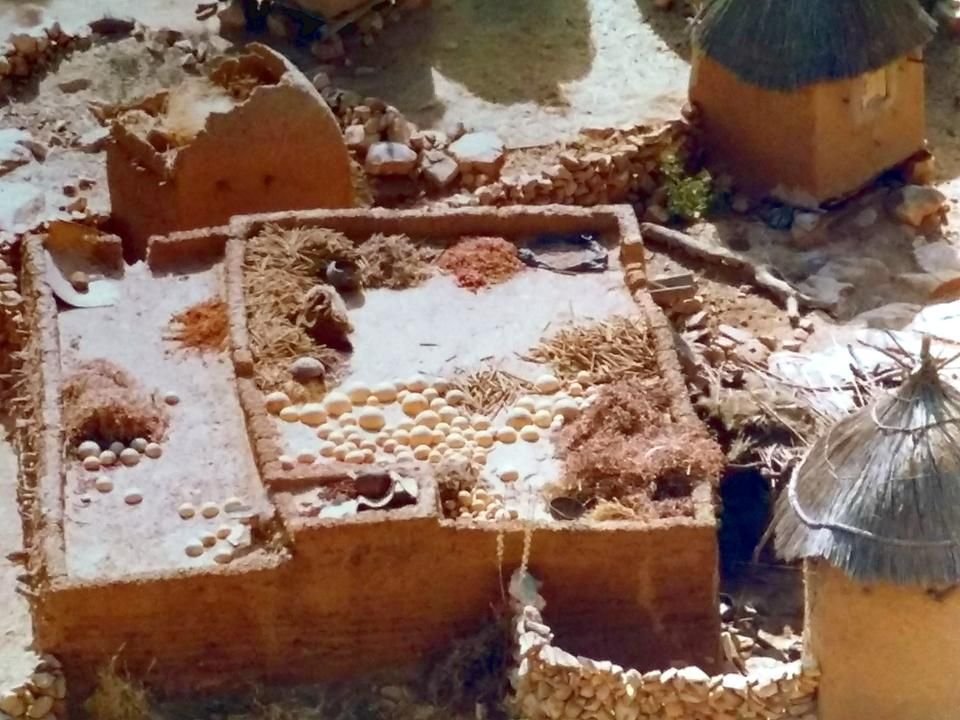
In a village we shopped at the market. It takes place once a week, that is to say every 5 days in Dogon country. In another we were invited to a traditional wrestling competition, a popular sport among young boys, an atmosphere to break everything but with a lot of respect between the opponents.
At other times, in the evening, the storyteller told stories and everyone, young and old, listened passionately. I did not understand the meaning but I loved these moments of relaxation, rocked by the words and the fatigue of the day. I was impressed by the way the griot caught the attention and captivated such a heterogeneous audience.
For the curious, read Amadou Hampâté Bâ. He put in writing the tales of the African oral tradition, those who passed from generation to generation, the evening around the fire. To prevent them from getting lost for ever. These tales, very pictorial, involve the animals, they are full of common sense and can be read on several levels. The children are amused, the older people philosophize. Hampâté Bâ also wrote two autobiographical books that are enchanting if you love West Africa. He is the Malian Marcel Pagnol, it's easy to read, fun, and often moving.
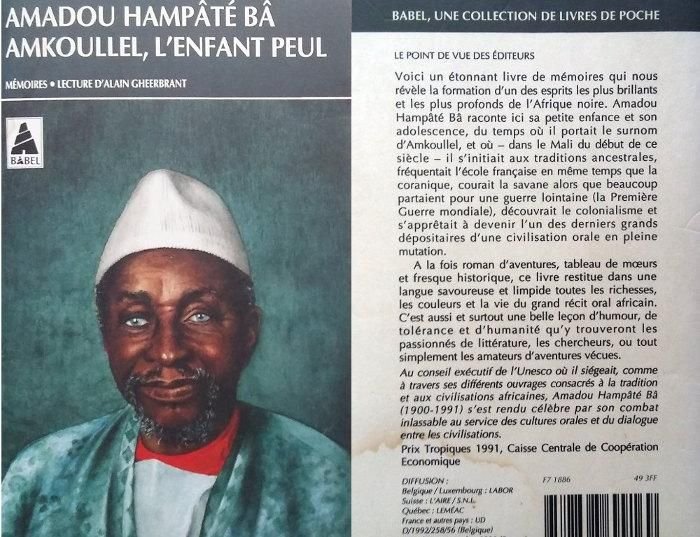
First volume of the life of Amadou Hampâté Bâ
As I had described a little for Madagascar, the funeral rites here are long and important. At the moment of death, the deceased is washed and placed in the open air in the faults of the cliff. Riding the body is neither easy nor without risk, it's a mountaineer's job. A few months later they celebrate the funeral that allows the family to mourn. The soul, during all this time, stays around the village. Finally, in a ceremony that can last several days, the souls of all those who died in the past few months are called to join the ancestors. The masks come out, dance and parade through the village. It's the end of mourning.
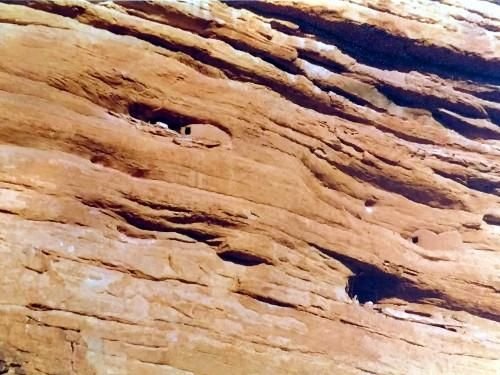
The faults at the top where the dead are put provisionally
The political situation improved in the following years, the Dogon country opened, it became the most visited site of West Africa. The Europeans arrived at Bamako airport to be taken care of by luxury 4 x4 and brought in a few hours. Two years later, the car park full of tourists, clean and turbaned as it should be, admired my Renault 4, center of interest, rare beast among the huge 4x4 of travel agencies.
Some children no longer went to school, becoming a guide one fine morning, attracted by easy money. Some still sold their door, their window, sculptures sometimes ancestral. Obviously it was a contribution of money for the village that needed it, everything has two sides.
The wheel had turned and after the Tuareg warriors others have come, more dangerous and better armed.
-- @terresco
01: Encounters with Africa: Ivory Coast, by @terresco
02: Encounters with Africa: Abidjan, a daily pleasure, by @terresco
03: Encounters with Africa: The Tuaregs of Agadez, by @terresco
04: Encounters with Africa: The Tuaregs of Agadez, part 2, by @terresco
05: Encounters with Africa: On the way to the Dogon country, by @terresco
From Cape Town to Mombasa series:
01: Africa, the long crossing
02: From Cape Town to Mombasa: South Africa
03: From Cape Town to Mombasa: Namibia
04: From Cape Town to Mombasa: Botswana
05: From Cape Town to Mombasa: Zimbabwe
06: From Cape Town to Mombasa: Zimbabwe, part 2, by @terresco
07: From Cape Town to Mombasa: Zimbabwe, part 3, by @terresco
08: From Cape Town to Mombasa: Zambia, by @terresco
09: From Cape Town to Mombasa: Malawi, by @terresco
10: From Cape Town to Mombasa: Tanzania #1, by @terresco
11: From Cape Town to Mombasa: Tanzania #2, by @terresco
12: From Cape Town to Mombasa: Tanzania #3, by @terresco
13: From Cape Town to Mombasa: Tanzania #4, by @terresco
14: From Cape Town to Mombasa: Kenya, by @terresco
